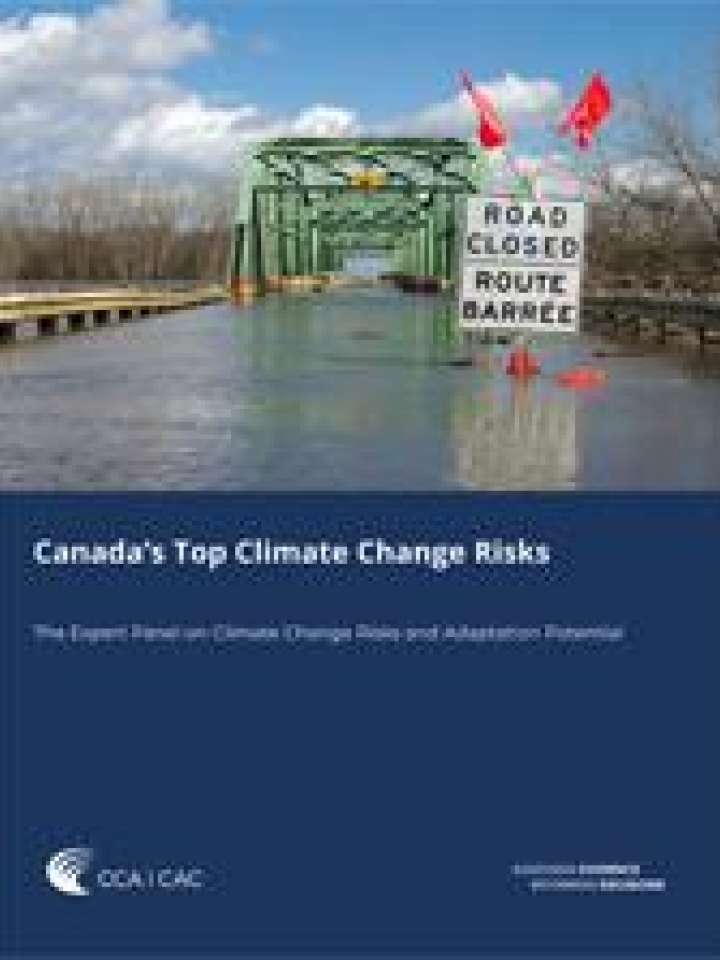Canada’s top climate change risks
The climate is changing, with temperatures in Canada rising at twice the global average. Over the next 20 years, we can expect to see increasing impacts of climate change, from more frequent and severe hot extremes, to thawing of permafrost, to increases in extreme precipitation. These types of changes put a range of natural and human systems at risk, prompting governments to intensify their efforts to adapt to climate change and reduce greenhouse gases.
Canada’s Top Climate Change Risks identifies 12 major areas of risk: agriculture and food, coastal communities, ecosystems, fisheries, forestry, geopolitical dynamics, governance and capacity, human health and wellness, Indigenous ways of life, northern communities, physical infrastructure, and water. The report concludes that while all 12 risk areas have the potential to cause major harm in the coming decades, risks are most acute in six domains: physical infrastructure, coastal communities, northern communities, human health and wellness, ecosystems, and fisheries. Climate change risks are complex and interconnected, and consequences can multiply through natural and human systems in ways that are difficult to anticipate.
All 12 areas of risk considered in the paper can be meaningfully reduced through adaptation measures that lessen vulnerability or exposure. Federal government planning and prioritization for adaptation to climate change can be informed by a comprehensive understanding of the nature of the federal role in each risk area across three main categories: coordination and collaboration, capacity building, or managing government assets and operations.
Explore further
